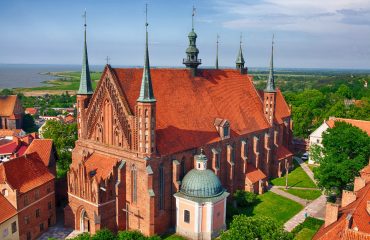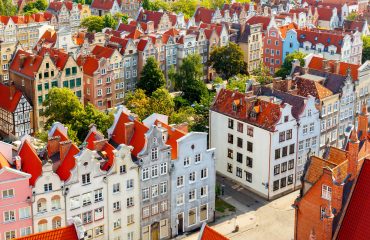POLAND 11 DAYS
from €1,419.00
Group size 10 Start Gdansk
Countries 1 End Gdansk
-
Reviews 1 Review5/5
-
Vacation Style Holiday Type
-
Activity Level Leisurely
-
10
All about the POLAND 11 DAYS.
We have designed a journey for you with the ambitious purpose of bringing you closer to a region that you may know from history lessons or from the stories of your grandparents or even older generations, but which today is covered with a patina of oblivion and mystery. As in the myths and legends, this landscape of the much-cited “dark forests and crystalline lakes”, decorated with insignia of the archaic life of a premodern society, with a harmonious rural life and an intact nature, a landscape with a clearly perceptible identity, their continuity complicated by many fateful events in history. Let yourself be carried away by the fascination of this ubiquitous sincerity, rediscover Masuria for yourself!

The tour package inclusions and exclusions at a glance
What is included in this tour?Items that are included in the cost of tour price.
- 10 overnights: 6 x Best Western Plus Arkon Park 4* (or similar) in Gdansk, 1x Hotel Młyn Aqua Spa Biblioteka 4* (or similar) in Elbing, 3 x Warmiński Hotel & Conference 3* (or similar) in Olsztyn.
- All-route English-speaking guide.
- Transfer by modern coach throughout the whole trip.
- Meals: HB (incl. Kashubian and Masurian specialties).
- English-speaking city tours (or other languages required): Gdansk, Sopot, Hel, Kartuzy, Elblag,Olsztyn, Mrągowo, Mikołajki, Torun.
- Entrance + guided tours: all sacral buildings according to the itinerary; Crane in Gdansk,trip to the Hel Peninsula, Slowinski National Park, open-air museum of rural life in Kluki, Kashubian Museum in Kartuzy, Pottery in Chmielno, City Park and the “Crazy house” in Szymbark, Malbork, Copernicus Museum in Frombork, Wolf ’s Lair at Kętrzyn, the Prussia Museum in Zondern, excursion in Puszcza Piska Forest, Philippon monastery in Wojnowo, the birthplace of Nicolaus Copernicus in Torun.
- Other highlights: Boat trip from Hel to Gdansk, ride by electric train in the Slowinski National Park, folklore evening “Masurian peasant wedding“ with specialties of Masurian cuisine and a carriage ride in Olsztyn, boat trip on the Elbląg Canal, boat trip on the river Krutynia.
What is not included in this tour?Items that are not included in the cost of tour price.
- Visa Fee
- Travel Insurance
- Flights
- Single Supplement
- Any meals not mentioned
- Any transfers not mentioned (e.g. first and last day)
- Any expenses of a personal nature
- Camera/video permits
- Tips to the guide and driver
Overall Rating
5/5








Мы с мужем влюбились в Польшу. Мечтали здесь побывать уже годами и наконец мечта осуществилась. Здешняя архитектура это просто нечто. Так как мы пара в возрасте, чуткое и внимательное отношение персонала туристического агентства было для нас важным. Спасибо!